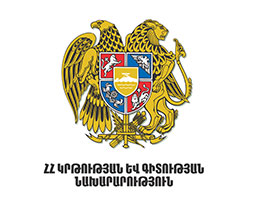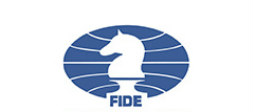
 ChessAcademy.am
ChessAcademy.am
The Way of Creating a Comprehensive Textbook for Secondary Schools in Armenia and Features of the Textbooks: Hamlet Toomanyan’s Interpretation
 Mr. H. Toomanyan has been engaged in the teaching of chess for a long time. He is a FIDE Senior trainer, he used to teach chess in the biggest specialized school in the Islamic Republic of Iran, and has also been in cooperation with Chess Academy of Armenia since 2007. Mr. Toomanyan is the author of chess textbooks, as well as workbooks and supporting materials for teachers in the form of manuals for elementary school. After receiving the invitation by the Vice-President of Armenia Chess Federation and founder of the Chess Academy of Armenia, Smbat Lputian, to create a comprehensive textbook of chess for the elementary school pupils, Mr. Toomanyan began to deepen his research training in the field of chess which served as a basis for the preparation of chess textbooks. Comparing the differences between the principles of teaching chess in Armenia and Iran, Mr. Toomanyan mentions that the main incentive for successful implementation of the chess teaching in Armenia is the team of qualified experts and chess coaches. He also highlighted that many chess coaches from Iran improved their qualities being trained by the Armenian specialists.
Mr. H. Toomanyan has been engaged in the teaching of chess for a long time. He is a FIDE Senior trainer, he used to teach chess in the biggest specialized school in the Islamic Republic of Iran, and has also been in cooperation with Chess Academy of Armenia since 2007. Mr. Toomanyan is the author of chess textbooks, as well as workbooks and supporting materials for teachers in the form of manuals for elementary school. After receiving the invitation by the Vice-President of Armenia Chess Federation and founder of the Chess Academy of Armenia, Smbat Lputian, to create a comprehensive textbook of chess for the elementary school pupils, Mr. Toomanyan began to deepen his research training in the field of chess which served as a basis for the preparation of chess textbooks. Comparing the differences between the principles of teaching chess in Armenia and Iran, Mr. Toomanyan mentions that the main incentive for successful implementation of the chess teaching in Armenia is the team of qualified experts and chess coaches. He also highlighted that many chess coaches from Iran improved their qualities being trained by the Armenian specialists.
Attending the meetings with Armenian chess coaches that were held under the leadership of the president of Chess Academy of Armenia, Hamlet Toomanyan emphasized the positive effect that training had on his professional skills. During these gatherings, due to contacts with experienced professionals such as Mr. Ordyan, H. Toomanyan developed his skills to create the kind of chess problems that challenge and contribute pupils’ creative thinking. To explore the positive impact on the development of child's thinking, Mr. Toomanyan has been working in a specialized chess school in Tehran and initiated an experiment, during which professional psychologists were trying to determine the level of intelligence of children attending chess, through specially designed IQ tests. The same tests were conducted with the same children a year later and while comparing the results of the completed tests by the children, the positive impact of chess on the intellectual abilities of pupils became evident. Following this, with the cooperation of the students from Tehran University who were studying psychology and summing up the results of their research, Mr. Toomanyan came to the conviction that chess had a positive impact on collaborative work of child's brain's right and left hemispheres, as well as on overcoming a number of problems in hyperactive children, such as the training of their short memory.
It is important to note that according to Mr. Toomanyan, in the secondary school textbooks there is no stereotyped patterns of thought and the pupils are given the freedom to find their own answers to the tasks. The book is trying to develop children’s ability to control the situation on their own and have their own attitude towards everything.
As mentioned above, the game of chess is a tool to create problems, and has the ability to develop creative thinking and thus, it holds a unique role as a subject taught in secondary schools. Due to this characteristic, chess holds the opportunity to propose to children tasks that do not require direct answers and accordingly help them to develop multidirectional thinking. While studying chess, the pupil has the chance to think over unlimited number of options for handling the issue. Chess trains pupils’ short memory, which in turn contributes to the development of the pupils’ active memory. In this context it is important to emphasize the fact that chess has its positive impact on the development of children who are hyperactive as well as children who are passive or have problems with concentration.
The problems involved in chess textbooks require pupils to demonstrate a non-standard way of thinking and to think out of the box, to find the keys to the problems. In addition to the above mentioned, chess learning contributes to the development of certain features of the child’s character. For instance, in certain complex situations it’s typical for human psychology to solve the problems bypassing them, but the chess player will delve into the current situation and overcome the problem finding a solution to it instead of skipping it. From this perspective it is important to refer to the fact that chess teaches to calculate the possible moves that can be made by your opponent. The latter is demonstrated in such chess situations as the escape of the stalemate, zugzwang or check in two steps through a zugzwang position. In such cases, the chess player has to think about the enemy as well.
Chess is a form of a unique struggle. Philosopher James Morris argued that struggle is itself negative phenomenon, but it manifests such positive qualities as courage, loyalty and solidarity. Chess also develops qualities such as alertness, attention and rational understanding. Chess contributes to player’s personal development and improvement. From this point of view it is very interesting the comparative analysis of several chess positions due to which the pupil’s working memory and concentration are being trained. Books are designed in a way that will allow you to develop these qualities in elementary schools’ children, as well as stimulate to their creative approach to solving problems.
Joint research with psychologists have proven that chess learning helps pupils develop thinking and the unique principles according to which the books are designed to help to realize this goal. The most important stage in book preparation process was the elaboration of the principle according to which the classes would follow each other allowing to organize educational process more effectively. The book represents the history of classic chess, that helps pupils form a unique taste. In the Armenian textbooks special attention is given to the skill of step registration.
There is a capitalistic approach to chess training, when a new child who is learning to play chess is taught to think of obtaining pecuniary advantage (pawn must constantly strive to go forward and become a queen). This approach is considered old-fashioned by the author of the book and is missing in the Armenian textbooks. Leaving aside the other world famous chess teaching models, when chess training is conducted by starting with rooks, in other cases, by pawns on the contrary in Armenian chess books teaching starts with the piece of King that symbolizes the idea of God and eternal life. Thus, the king chess piece is introduced to the child first, then the queen as the strongest piece, and afterwards the position of mate is taught as the final goal of the game. This principle allows for the child to be introduced to the main purpose and competitive nature of chess.
The book is designed so that the tasks gradually become more complicated and each proposed issue implies the possibility to give the child more difficult task during the next training. Mr. Toomanyan notes that our experience shows that a child's education according to these principles can have a positive impact on the child’s future and helps them make well considered decisions using their own critical thinking.
It should be noted that while setting a task to develop the children’s way of thinking the chess textbook also contributes to the identification of talented children in chess who have not had access to learn chess. Thus, the combination of these methods allows pupils to generate interest and love for chess.
To summarize, Mr. Toomanyan also stated that to develop the education system, the change of the Government’s attitude towards all teachers was of a great importance. As a result, teachers will be more appreciated and highly paid. This can help provide even greater impetus to make long and difficult task to educating the future generation more successful.
By Tatev Khachatryan




